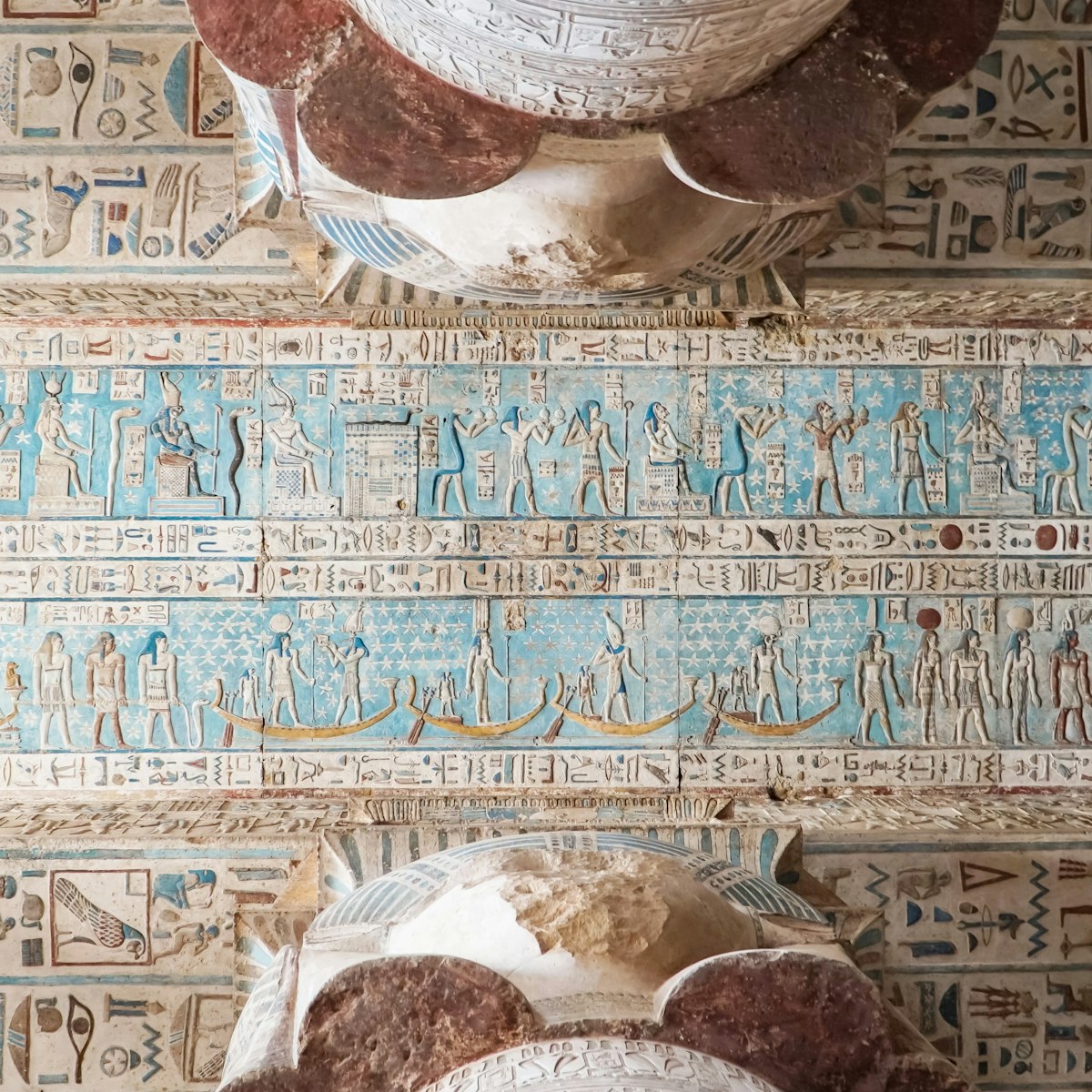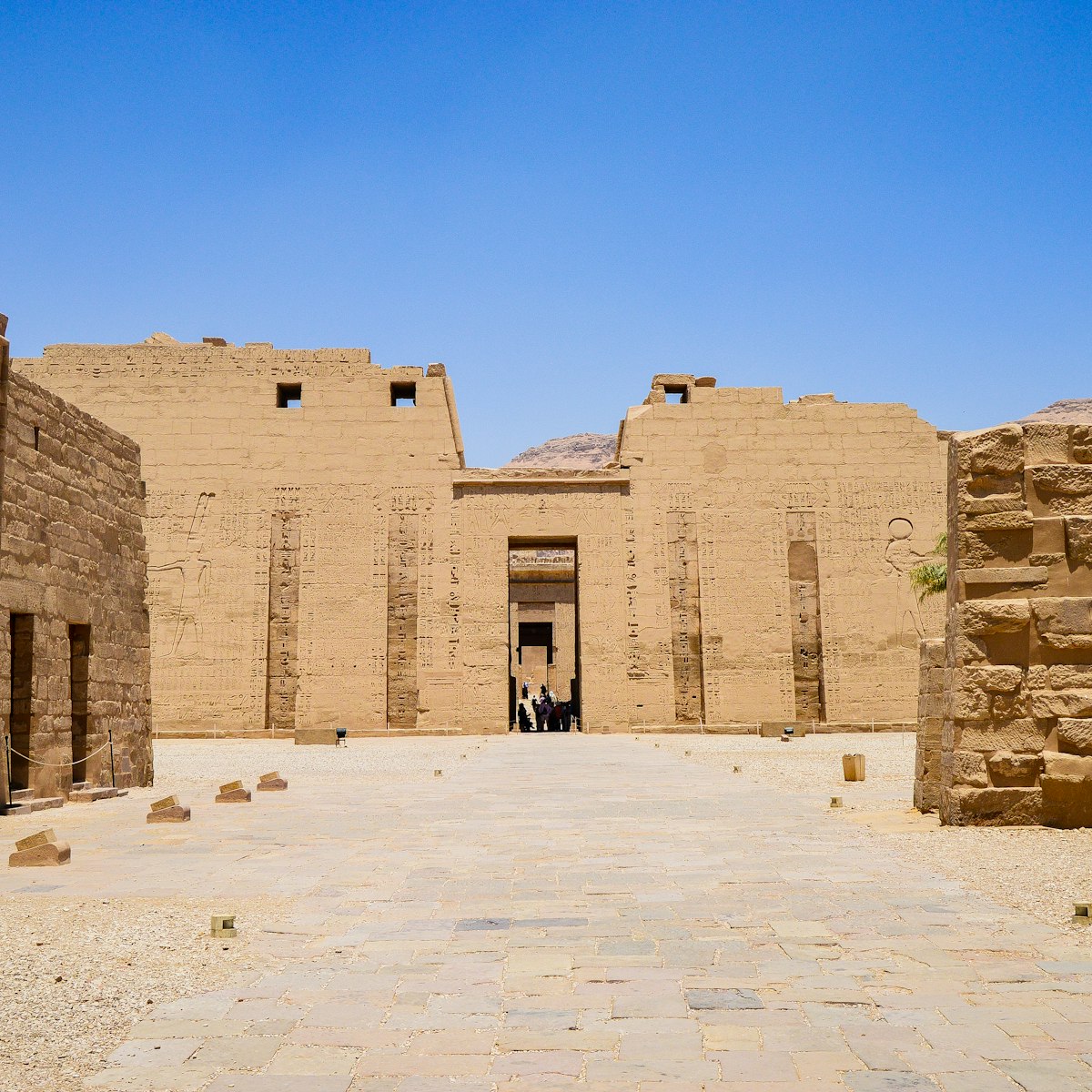This site takes its name from a Ptolemaic temple, later converted to a Coptic monastery – the Monastery of the Town – but the real attraction is the unique Workmen’s Village. Many of the skilled workers and artists who created tombs in the Valley of the Kings and Valley of the Queens lived and were buried here. Archaeologists have uncovered more than 70 houses in this village and many tombs: the most beautiful are now open to the public.
About 1km off the road to the Valley of the Queens and up a short, steep paved road, the small Ptolemaic-era temple, measuring only 10m by 15m, was built between 221 and 116 BC. It was dedicated to Hathor, the goddess of pleasure and love, and to Maat, the goddess of truth and personification of cosmic order. In front of the temple are the remains of the workers' village, mostly low walls although there are also remains of ancient irrigation pipes. More impressive, however, are the nearby tombs of Sennedjem, Peshedu, Inherka and Ipuy. Originally these were all topped by small mud-brick pyramids, one of which has been rebuilt.








